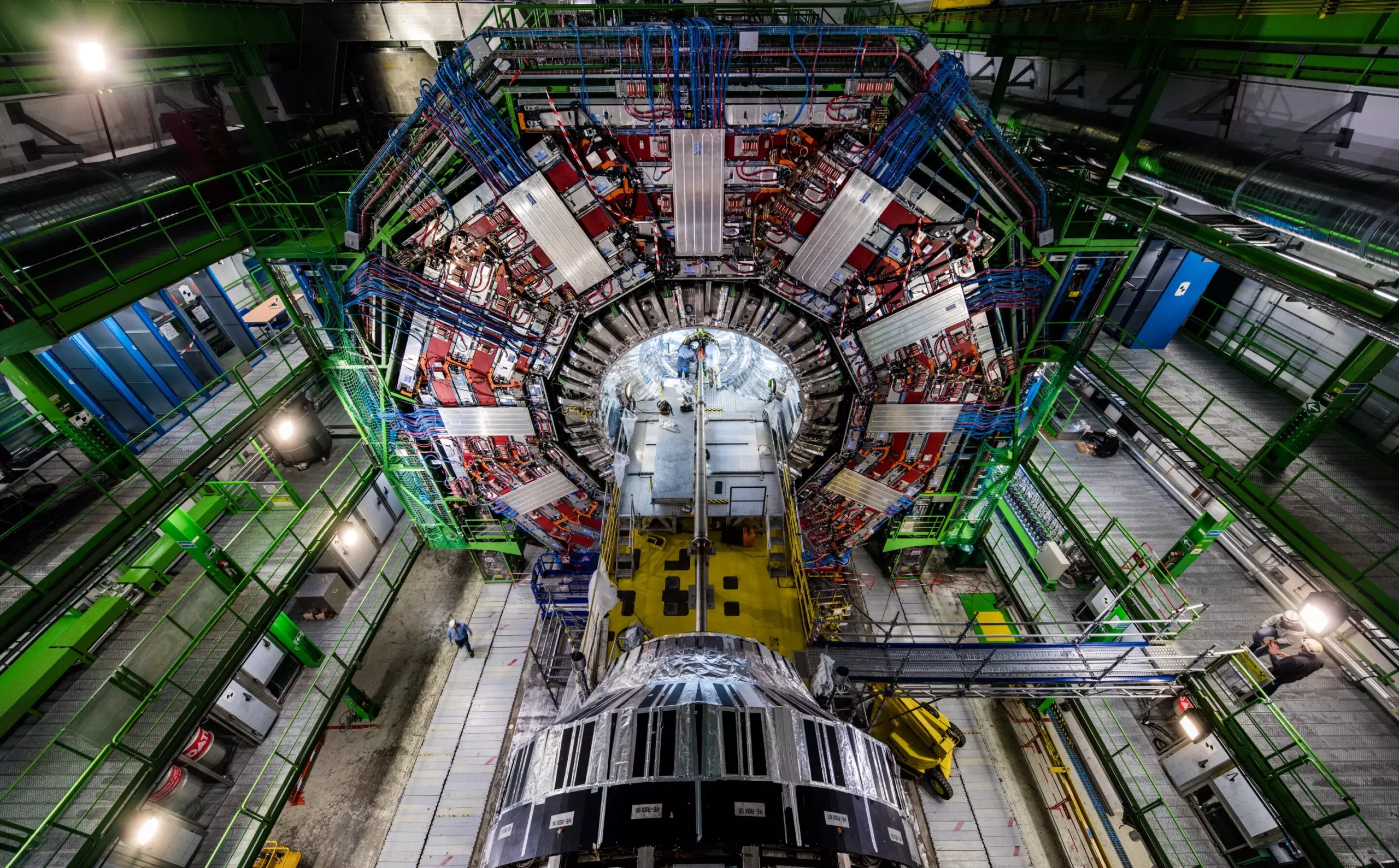The W boson, one of the fundamental particles in the Standard Model of particle physics, plays a pivotal role in mediating the weak nuclear force, which governs processes such as radioactive decay. Discovered in 1983, this elusive particle has been the subject of numerous experiments aimed at precisely determining its mass. As physicists continue to push the boundaries of our understanding of the universe, recent innovative advancements have led to significant breakthroughs. In 2022, the Collider Detector at Fermilab (CDF) produced unexpected measurements that sparked intense scrutiny and reinforced the need for further exploration of the W boson’s characteristics.
Now, researchers from the Compact Muon Solenoid (CMS) experiment at the Large Hadron Collider (LHC) have presented a new mass measurement of the W boson, demonstrating remarkable precision that enhances our understanding of particle physics. After nearly a decade of rigorous analysis, the latest results align closely with established predictions, marking an important milestone amid years of uncertainty regarding the W boson’s properties.
The CMS experiment employed a unique methodology to analyze data collected from the LHC’s 2016 run, encompassing approximately 300 million recorded events alongside 4 billion simulated events. With this vast dataset, the researchers meticulously reconstructed and measured the mass of more than 100 million W bosons. Their final measurement stands at 80,360.2 ± 9.9 million electron volts (MeV), closely aligning with the predicted value derived from the Standard Model, which states 80,357 ± 6 MeV.
This precision measurement of 0.01% is comparable to assessing the length of a 4-inch pencil with a deviation smaller than the width of a human hair. Such meticulous work highlights the difficulties inherent in studying fundamental particles that lack physical volume. As physicist Anadi Canepa noted, the W boson presents unique challenges, particularly due to one of its decay products, neutrinos, which escape detection in collider experiments.
Understanding the mass of the W boson is far more than an academic exercise; it has profound implications for our comprehension of the universe’s fundamental forces. By precisely measuring the W boson’s mass, physicists can glean insights into the interactions between particles, including the effects of the Higgs field and the convergence of electromagnetic interactions with the weak force. According to Canepa, discrepancies in expected mass values raise the tantalizing possibility of undiscovered particles or forces, inviting speculation about the fabric of reality itself.
Each experiment contributing to W boson mass measurements has built upon the work of predecessors, creating a collaborative tradition in the field of particle physics. Patty McBride, a distinguished scientist at Fermilab, emphasized the cumulative knowledge these institutions have provided, stating, “We are standing on their shoulders” as they paved the way for these advancements.
The Challenge of Data Analysis and Interpretation
The complexity of measuring the W boson’s mass requires ingenious methods to compensate for the challenges posed by unobserved neutrinos. By leveraging advanced simulations of billions of proton collisions and sophisticated calibration techniques, researchers were able to enhance the accuracy of their results. As Josh Bendavid noted, such important strides involve creatively approximating the impact of theoretical concepts and accurately modeling particle behavior before decay.
Previous methodologies relied on indirect measurements through the properties of the Z boson, a closely related particle. While this approach yielded valuable insights, it introduced a layer of uncertainty due to the differing characteristics of the W and Z bosons. The CMS team skillfully developed an analysis method rooted exclusively in real W boson data, substantially freeing their analysis from dependencies on the Z boson, thus propelling the research forward with newfound confidence.
With the precision achieved through this latest CMS analysis, the possibilities for further investigations within the realm of particle physics expand dramatically. Manca notes that enhanced accuracy will help to tackle critical questions surrounding the W, Z, and Higgs bosons, which have extensive ramifications for the theoretical framework underpinning our understanding of matter and energy.
The painstaking efforts required for these analyses reflect the dedication and depth of expertise within the field. As researchers like Manca move from initial stages of inquiry to postdoctoral research, the legacy of collaborative advancements builds momentum for future discoveries. Through their commitment to unraveling the mysteries of fundamental particles, physicists hold the key to unlocking deeper insights into the workings of the universe—ushering in an era of discovery that continues to ignite curiosity and drive scientific inquiry.



Leave a Reply